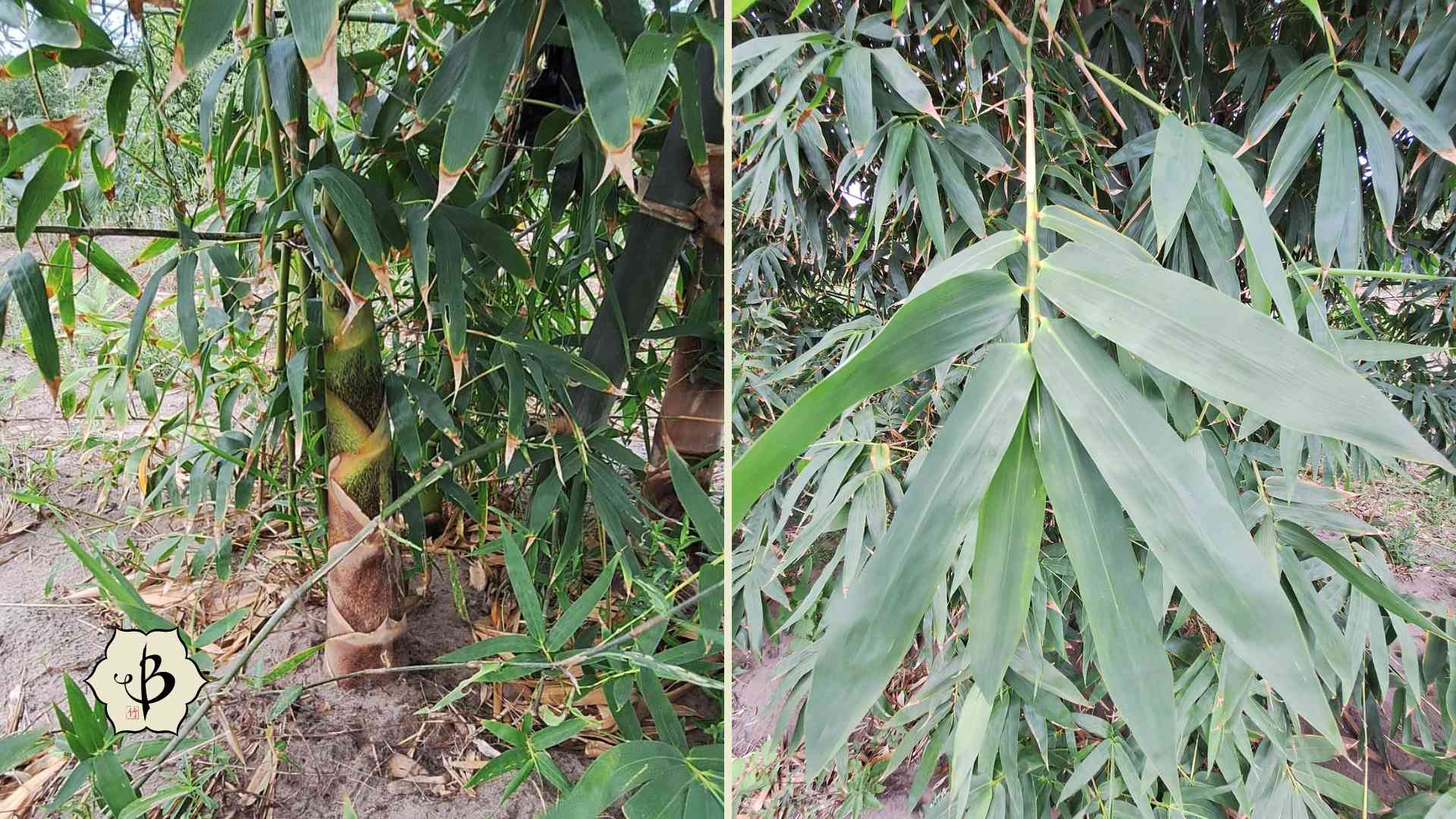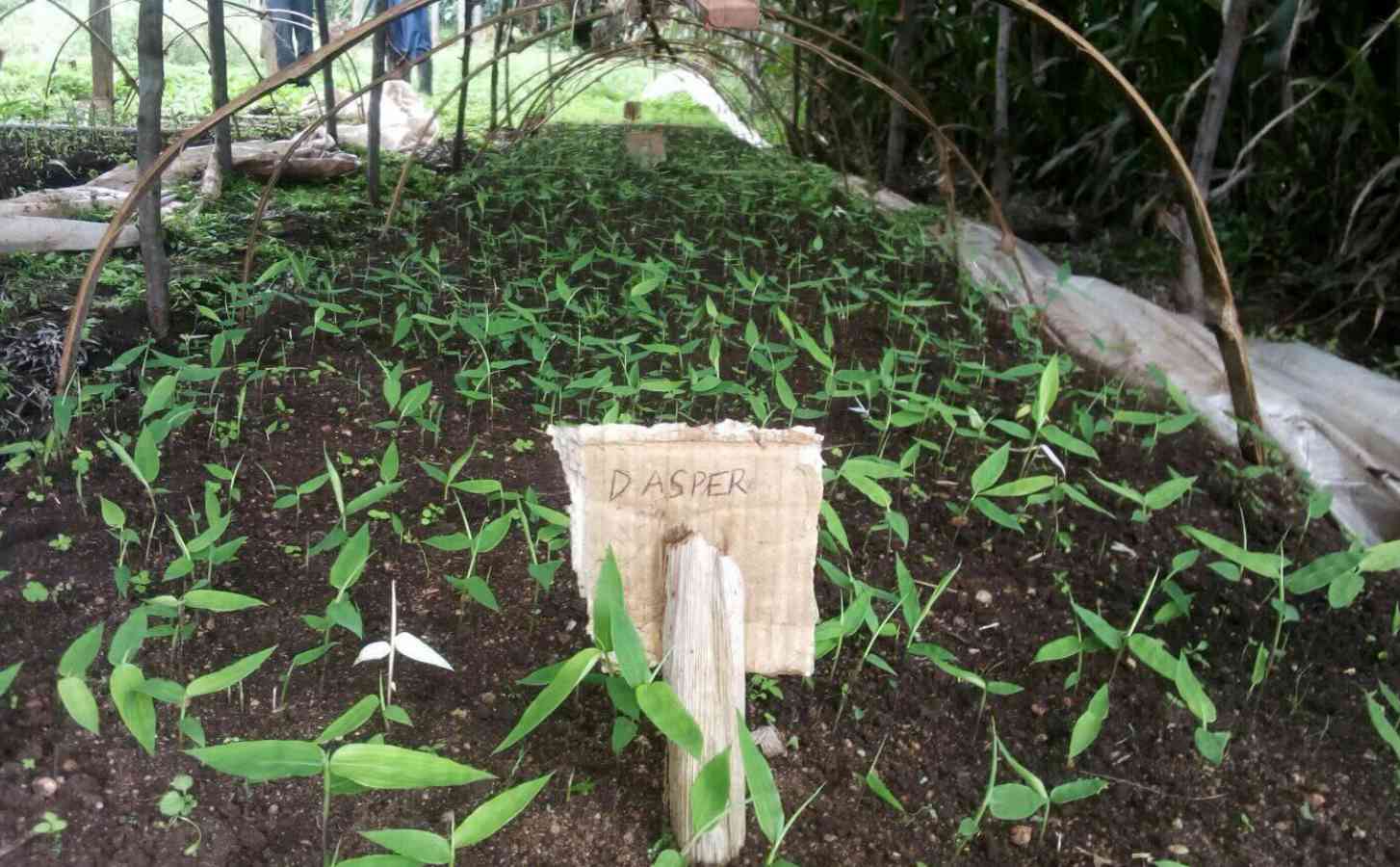Packed with a wealth of natural resources, Africa remains the world’s poorest continent per capita. And given its position straddling the equator, it deserves to be called the Green Continent. But that name more often goes to South America. Yet many Africans, in Kenya in particular, have a plan to make their homeland greener and wealthier. And they are looking to bamboo as a pillar of their plan.
Native bamboo grows widely in the wetter parts of Kenya and along the Great Rift Valley. But Climate Change has brought drier weather and longer droughts to the country, resulting in less favorable conditions for bamboo. Still, many see bamboo as a crucial resource for Kenya with great potential to improve the country’s economy and ecology. In recent years, increasing numbers of farmers and activists in Kenya have been promoting bamboo for its tremendous versatility and economic value, as well as its ability to sequester carbon, prevent erosion, and restore the forests.
NOTE: This article first appeared in September 2021, most recently updated in August 2025.
Native Bamboo in Africa
Africa’s highest concentration of bamboo is actually in neighboring Ethiopia, to the north, in and around the Great Rift Valley and the fertile regions around the Blue Nile. Oxytenanthera abyssinica, which takes its name from Ethiopia’s former name, thrives here. It’s also called African Lowland Bamboo and is the continent’s most prevalent bamboo species. Yushania alpina, or African Highland Bamboo, is another widespread species, found at higher elevations including the slopes of Mount Egon. This species is sometimes listed as Oldeania alpina.
Farmers have also introduced dozens of non-native bamboo species for cultivation in Kenya. But in the north and northeast regions of the country, the heat and aridity make the landscape less hospitable for bamboo. Climate Change has only intensified these challenging conditions, bringing more extreme weather, longer droughts, and unpredictable rain seasons.

Environmental Issues in Kenya
As Climate Change makes farming more difficult in places like Kenya, many see bamboo as an effective tool for coping with the global problem. For the same reason that bamboo is gaining support around the world, Kenyans are recognizing the vast potential of this incredible grass.
Since the turn of the century, Kenya has been losing about 15-20,000 hectares of forest and tree cover each year. This has mainly been a result of exploiting natural resources and expanding housing and development. As of 2020, only about 6% of Kenya’s land remained forested. This is a shockingly low number for an equatorial country with a partly tropical climate.
Deforestation poses a serious threat to the country’s biodiversity and entire ecosystems. Without the native forests, rainwater washes away the topsoil, resulting in more frequent flooding and serious erosion that makes it difficult for other trees and flora to take root and survive. Trees and forests are vital for attracting and retaining moisture. Without them, the negative effects of Climate Change are magnified.

Reasons for Bamboo Cultivation in Kenya
Bamboo’s resilience and its tenacious root system make it an ideal pioneer species in these degraded landscapes. Bamboo plants have minimal nutrient requirements and can establish themselves relatively quickly. The pervasive, mesh-like rhizome roots of bamboo are famous for their relentlessness. Once established, they are very difficult to remove.
As the roots of bamboo spread, they are excellent for reducing erosion and holding the topsoil together. In this way, they help to prevent or mitigate floods and landslides. This too makes the terrain more habitable for other plant species, hastening the forest’s recovery. Bamboo is also bushy and drops a large quantity of leaves, which in turn decompose and help build up healthier topsoil.
Carbon capture is another vital capability of bamboo. With its fast growth rate and high metabolism, bamboo photosynthesizes more quickly than most plants and produces more oxygen than most trees. In the process, these bamboo groves pull carbon (CO2) out of the atmosphere. In a well-managed bamboo farm or forest, the roots are able to store the carbon over long periods, even as the bamboo is harvested. That’s because the root systems endure even when the poles, or culms, are cut down.
The versatility and popularity of bamboo as a resource and building material mean that farmers can grow it as a cash crop. Compared to other crops, bamboo requires little in the way of agricultural inputs, like fertilizers and herbicides. Once established, which takes only about five years, bamboo is also relatively drought-tolerant.
In Kenya, like elsewhere, most bamboo farmers use or sell their harvested poles for building material. Edible bamboo shoots are another popular commodity, as is bamboo charcoal. As of 2014, Kenya was the 10th leading exporter of bamboo charcoal, an excellent substance for air and water purification, as well as a beneficial soil additive. With greater investment in the local industry, factories could be built to process the bamboo into more sophisticated materials, like engineered lumber, making the crop far more profitable.

Challenges and Opportunities for Bamboo Cultivation in Kenya
Despite its enormous potential, bamboo cultivation has not yet become extremely widespread in this African country. More traditional crops like coffee and tea remain much more popular. Furthermore, climate conditions in much of the country are less than ideal, especially in the north near the Ethiopian border, where it’s hotter and drier.
And Climate Change is not helping. But with some strategic planning and careful selection of optimal species, bamboo could actually alleviate some of the worst impacts of Climate Change.
Unfortunately, however, leaders and policymakers in Kenya have yet to demonstrate the political will to really encourage bamboo cultivation and allow it to take off. Only very recently has progress begun to take place. In September 2020, the government reclassified bamboo from a grass to a crop. This will open the way for even more research and investment in Kenya’s burgeoning bamboo industry.
The brightest beacon of hope lit up in 2025, when We Do Bamboo launched a factory and started buying local bamboo from Kenyan farmers to meet their raw material needs. This promises to be a game-changer for the many bamboo enthusiasts who confidently started planting this crop in the last decade or so, but until recently were disappointed by the lack of commercial demand. Contact We Do Bamboo directly for more information.

Bamboo activities and activism in Kenya
In the meantime, many private individuals and non-government organizations are taking matters into their own hands. Bamboo enthusiasts from all walks of life are finding ways to promote the plant and spread the gospel of bamboo in Kenya. And according to INBAR (International Bamboo and Rattan Organization), the country now has about 130,000 hectares of bamboo.
The Dutch-Sino-East African Bamboo Development Program is currently working with farmers in Ethiopia, Kenya and Uganda to provide agricultural training, create opportunities and relieve poverty. They are one of the largest international organizations with bamboo projects in Africa. Their recent work has focussed on assisting small and medium-sized bamboo growers, establishing bamboo nurseries to supply future farmers, and training individuals who wish to make a business growing or working with bamboo.
Bamboo in Nandi County
Down south, in the Nandi Hills region of Kenya, Abraham Korir is on a personal mission to spread the message of bamboo. His YouTube channel, Why Bamboo, aims to empower local farmers and aspiring growers with information and inspiration.
On his own farm, Korir grows six different varieties of bamboo, including the native O. abyssinica, and several Asian species: Dendrocalamus asper, D. gigantias, D. latifloras, Bambusa vulgaris, and Bambusa longinternode. Originally he began planting bamboo to prevent erosion on his sloping land, and as a way of cleaning the water that passes through his property. Now he is able to harvest and sell poles from his well-established timber bamboo. Korir is also happy to provide starter plants for other farmers whenever possible.

Bamboo Chairman in Vihiga County
Not far from Lake Victoria, Victor Mwanga operates the Tiriki Tropical Gardens and Farm Nursery. More than a nursery, Tiriki offers a key resource center for bamboo enthusiasts in SW Kenya. Mr. Mwanga, also the Chairman of the Bamboo Association of Kenya, is engaged in a variety of projects to promote sustainable reforestation and improve the bamboo value chain in his country. More than anyone else I’ve spoken with in Kenya,
Mwanga has a thorough understanding of what it takes to grow bamboo and what it takes to turn it into a valuable commodity. He is willing and eager to share his knowledge and his passion, training and educating others in order to see bamboo reach its full potential in restoring the landscape and stimulating the local economy.
Bamboo Consultancy in Nairobi
A youth-oriented organization based in Nairobi, the Moonlight Initiative works with local students promoting sustainability and a circular economy. As a consultancy, they offer local farmers training and advice on how to farm more ecologically and more successfully.
The Moonlight Initiative is especially passionate about promoting bamboo. Through their consultancy services, farmers learn the best methods for growing bamboo and how to earn money by growing bamboo. They also help farmers obtain seeds and starter plants to get their bamboo plantations going.
If you are looking for specialized assistance to grow bamboo in Kenya, you can contact the Moonlight Initiative at moonlightinitiative@gmail.com or set up a one-hour consultation.
EcoPlanet Bamboo Headquarters in Kenya
EcoPlanet Bamboo specializes in establishing bamboo plantations in equatorial regions and cultivating it for industrial use. Committed to farming bamboo in the most sustainable way possible, they only plant on highly degraded land, never displacing local, native habitats.
Especially active in Central America and Africa, EcoPlanet Bamboo has extensive plantations in Nicaragua, Ghana, Kenya, and Southern Africa. The company, based in the US, also has a second headquarters located in Nairobi, managed by Camille Rebelo.
Since its inception in 2010, EcoPlanet has created hundreds of bamboo-related jobs in the developing world. In 2014, they earned the U.S. Department of State’s Award for Corporate Excellence.

More Bamboo Farming in Kenya
Kitil Bamboo, also based in southwest Kenya, is on a mission to make African bamboo competitive with bamboo from Asia, where it’s a multibillion-dollar industry. Kitil runs a major operation, growing several species of bamboo and propagating seedlings and plantlets on a massive scale. They ship internationally, but be sure to check your local laws regarding the importation of foreign flora first.
Able to supply bamboo farmers of all sizes, from homestead growers to plantations and reforestation projects, the commercial nursery has live plants for sale and trays of bulk bamboo saplings available by advance order. Native bamboo and Dendrocalamus timber bamboo are their specialties, but they also offer Moso and a few species of Bambusa. Kitil also sells a number of other trees and shrubs endemic to Africa.
In addition to live plants, big and small, this full-service nursery also provides training and consultations on how to grow bamboo both for-profit and for land restoration.
Kenya dig it?
If you dig bamboo as much as we do and enjoyed reading about the state of bamboo around the Great Rift of Africa, you may want to spend more time perusing these in-depth articles.
- Where does bamboo come from?
- Bamboo Village Uganda
- Researching bamboo in Nigeria
- Bamboo, Malaria and Climate Change
- Reforestation with bamboo
- Bamboo and the Great Green Wall
- Permaculture in Ghana (on YouTube)
FEATURE PHOTO: Bambusa vulgaris ‘Vittata’, a common bamboo variety in Kenya and throughout the tropics. (Photo used with permission.)



























Kenya will take a lead in bamboo farming in Africa. Great read and willing to discuss further. Good stuff on bamboo in Kenya.
hi good people,
My name is Maina and was wondering if i acquire giant bamboo seedlings.
your response is greatly valued.
I can email you a catalog and price list.